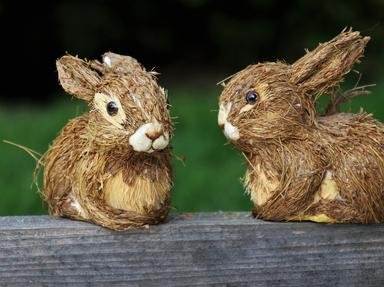Quiz Answer Key and Fun Facts
1. In what iconic ballet, a holiday favourite, does the evil Mouse King engage in battle with the title character?
2. Off the coast of which very large Australian state is Rottnest ("rat's nest") Island located?
3. A guinea pig named Olga da Polga is the protagonist of a series of children's books by what British author, known for writing about a marmalade-loving bear from Peru?
4. The North American tradition of Groundhog Day, initiated by German-speaking immigrants, coincides with which Christian festival, the conclusion of the Christmas-Epiphany season?
5. In which third-largest Russian city, the capital of the Siberian Federal District, would you find the Monument to the Laboratory Mouse?
6. What rodent, also a character in "Alice's Adventures in Wonderland", was considered a delicacy by the Romans, and is still eaten in some parts of the world?
7. The beautiful "Portrait of a Lady with a Squirrel and a Starling" is the work of which German Renaissance painter, who also painted various portraits of Henry VIII?
8. One of the seventeen wards of which historic Italian city, known for its Palio horse race, bears the name of Istrice, or crested porcupine?
9. What British rock band, fronted by the charismatic, flute-wielding Ian Anderson, recorded the songs "Cat's Squirrel" and "One Brown Mouse"?
10. The beaver is known as Canada's national animal. What two US states, one of which borders Canada, have the beaver as state mammal?
Source: Author
LadyNym
This quiz was reviewed by FunTrivia editor
agony before going online.
Any errors found in FunTrivia content are routinely corrected through our feedback system.

